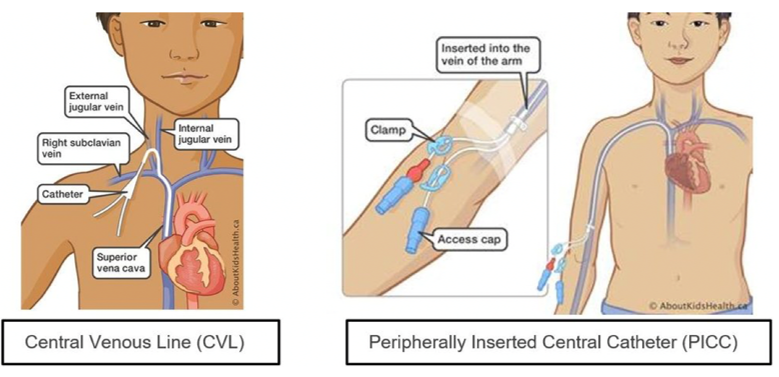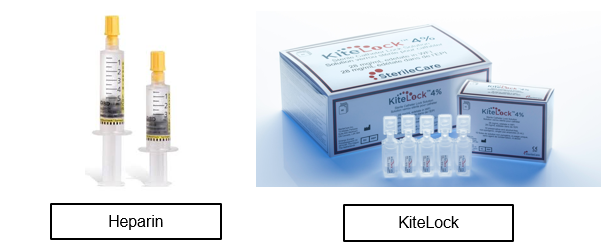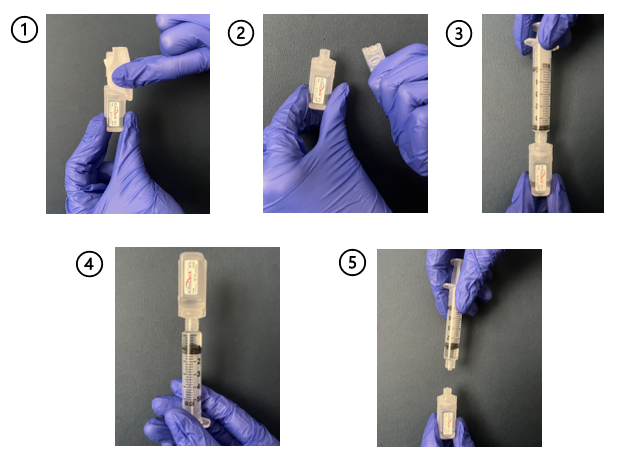HINT: What is KiteLock and why is it used for children with central venous access devices?
Connected Care Quick Hits are up to date and evidence based recommendations for the care of children with medical complexity & technology dependence, from hospital to home.
HINT: What is KiteLock and why is it used for children with central venous access devices?
SITUATION:
This QuickHit was informed by home and community care providers who have inquired about the use of KiteLock for children with central venous access devices (CVAD).
BACKGROUND:
Children with medical complexity rely on CVADs in home and community care for long-term intravenous therapy including medication administration, parenteral nutrition, dialysis, hydration and blood sampling. Types of CVADs include central venous lines (CVL) and peripherally inserted central catheters (PICC). Both types of CVADs may have single or multiple lumens.
Anticoagulants such as Heparin or KiteLock are instilled into each lumen of a CVAD when it is not in use to prevent blockages and maintain patency. KiteLock is a solution that is both an anticoagulant to reduce risk of blockages and an antimicrobial to decrease biofilm growth and the risk of infection.
ASSESSMENT:
Children with CVADs are at risk of blockages which may occur due to formation of a thrombus or clot within, surrounding, or at the tip of the CVAD catheter. They are also at risk of Central Line Associated Blood Stream Infections (CLABSI) which may occur when microorganisms enter the bloodstream through the CVAD.
For most children, Heparin will be the prescribed anticoagulant used to maintain patency of the CVAD. However, for certain populations (e.g., children with history of CLABSI or plans for long-term use of a CVAD) the child’s medical team may prescribe KiteLock instead. These solutions are instilled when the CVAD is not in use (e.g., when infusions/medications/treatments are completed).
Image adapted from Avanos™
RECOMMENDATION:
Connected Care recommends the following procedure to prepare and administer KiteLock for children with CVADs in home and community:
Confirm the child’s orders for administration of KiteLock. KiteLock is typically administered daily to maintain patency of the CVAD. Check the expiry date and do not use if leaking, the top is open, or fluid is not clear in colour.
To draw up KiteLock, perform the following steps:
Before opening, scrub the tab and neck of the vial with an alcohol swab for 15 seconds and let it dry for 15 seconds.
Use an aseptic technique to open the vial. Hold the tab between your index and thumb twist off the top of the vial clockwise. Do not touch the open part of the vial once open.
Attach a 5 mL syringe to the open vial and turn the syringe clockwise until it is tight.
Once the syringe is secure, invert the syringe so it is under the vial and pull the plunger down and draw 1mL of fluid into the syringe.
Remove the syringe from the vial after the dose is drawn up. Ensure there are no air bubbles in the syringe.
To administer the KiteLock, perform the following steps:
Stop any infusions running through the CVAD. Flush the lumen with saline using a firm pulsing motion (push/pause).
Attach the syringe with KiteLock to the cap of the CVAD and slowly administer the prescribed amount of KiteLock.
Once the KiteLock is in the line, close the clamp. Clamping while pressing on the plunger will create positive pressure to prevent blood from backing up in the CVAD.
















